The negative coverage of the general election campaign by British newspapers has been exposed in an academic analysis of the media which underlines Fleet Street’s penchant to “attack”.
An audit of print media coverage by Loughborough University found that no party achieved more positive than negative coverage during the seven-week campaign, with the most partisan papers fixated on criticising the parties they opposed rather than highlighting those they supported.
“In short, the campaign was more about attack than advocacy,” its report said.
Some will argue newspaper hostility is in stark contrast to Labour’s positive campaign, which has been hailed for encouraging more young people to vote and generated huge crowds at rallies.
In its report first seen by HuffPost UK, Loughborough University - which also found the campaign was much more presidential than in 2015 - characterised the newspapers as being “highly negative”, which is born out by no party getting more positive stories written about them than negative.

Once the coverage was weighted for circulation, figures reveal that only the Conservatives received more positive than negative press - but only just.
This indicates that most of the party’s negative coverage came in newspapers of smaller circulations.
While right-wing newspapers gave Corbyn a rough ride from the outset, Tories had their own problems over the ‘dementia tax’.
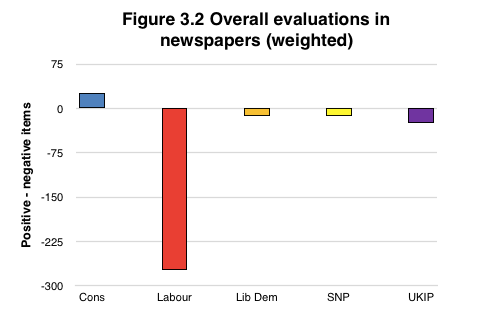
The Guardian and the Mirror were the Labour Party’s main supporters and the Sun, Telegraph, Express and Mail backed the Conservatives.
Exceptions to the partisanship were the Times, i and Financial Times, each of which were characterised by negativity towards both Labour and the Conservatives.
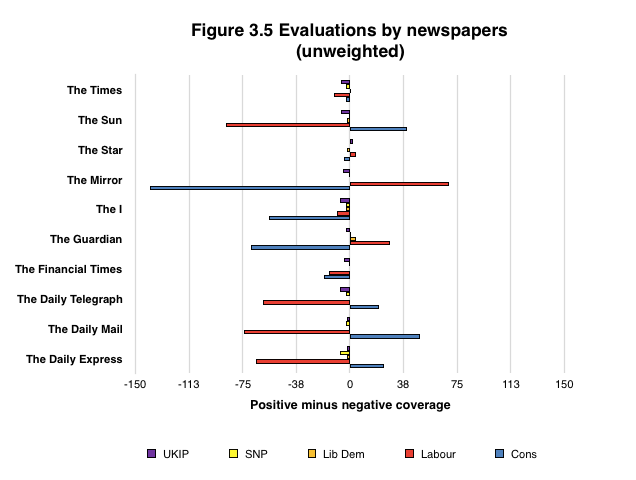
Elsewhere, it found TV and newspaper coverage was dominated by Theresa May and Jeremy Corbyn, with the pair hoovering up around 57% of all stories between them. The leaders of the other parties received a fraction of the coverage.
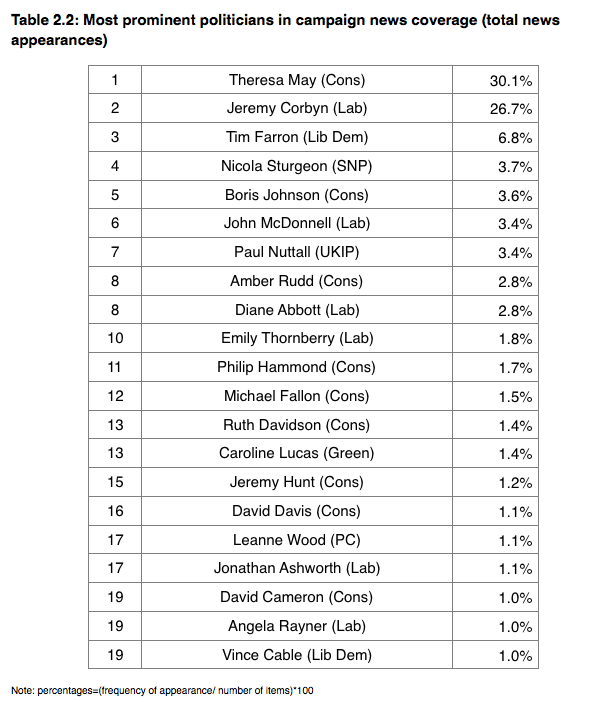
May was more prominent than Corbyn in the early stages of the campaign, but in weeks four and and five Corbyn was more or equally prominent. In the final week their media profiles were nearly equivalent.
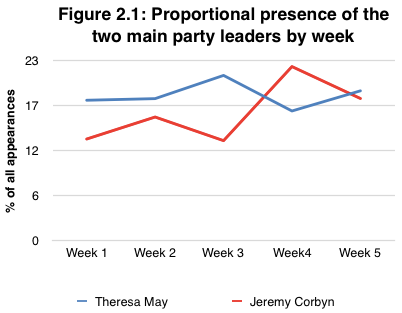
In contrast to the 2015 media election, the Tories and Labour dominated news coverage.
The ‘two party squeeze’ was most evident in press coverage, with 84 per cent of the featured politicians coming from the Conservative and Labour Party.
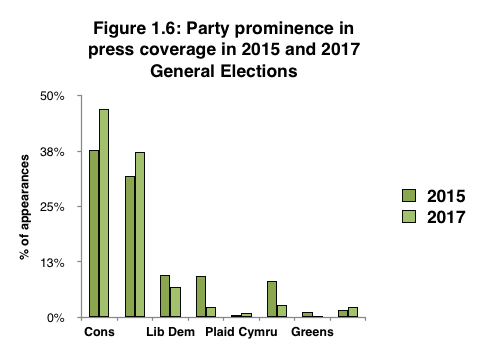
On TV, the two parties accounted for 67 percent of all appearances, which reflected new Ofcom guidelines that encourage broadcasters to take past and the seven-party leadership debate.
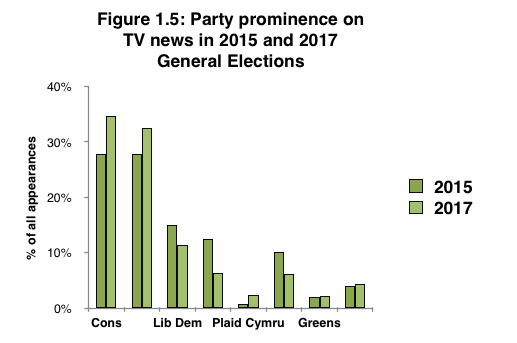
Loughborough University analysed:
Television: Channel 4 News (7pm), Channel 5 News (6.30pm), BBC1 News at 10, ITV1 News at 10, Sky News 8-8.30pm.
Press: The Guardian, The I, The Daily Telegraph, The Times, The Financial Times, The Daily Mail, The Daily Express, The Mirror, The Sun, The Star.
